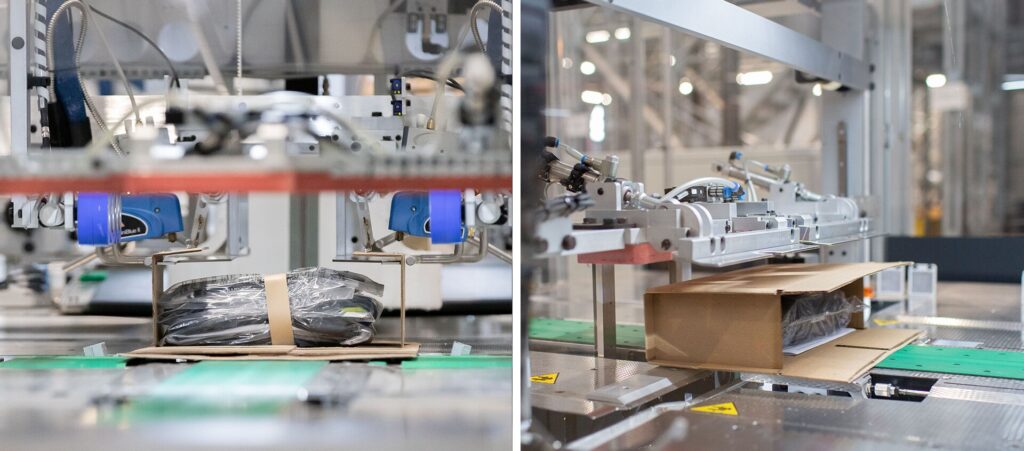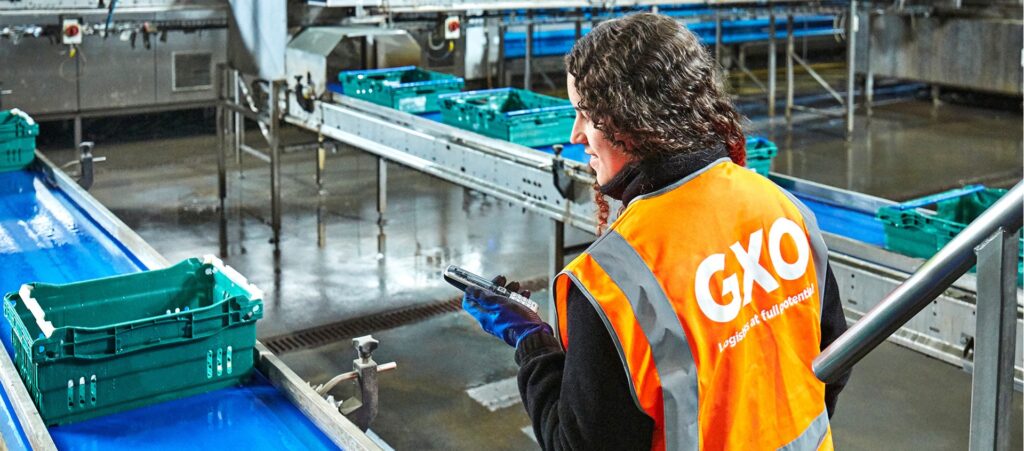Article
From storage to sustainability:
How the warehouse of the future is helping to drive the circular economy
Meagan Fitzsimmons, Chief Compliance and ESG Officer | Květen 22, 2023

Companies are more focused on their supply chains than ever before and are looking for new and innovative ways to maximize efficiencies and minimize costs. What more and more of these companies are realizing is that the right logistics partner can help them to minimize emissions at the same time – creating serious economic and environmental benefits.
The environmental sustainability conversation is currently laser-focused on greenhouse gas emissions. Companies are responding by taking a hard look at their operational and energy-related emissions. But many are also going further and actively engaging in the circular economy.
The circular economy focuses on maximizing value while minimizing waste, throughout each stage of the cycle – and highly efficient supply chains are at the heart of making it work.
World-class logistics providers can work with brands to reduce emissions associated with products through efficient forward and reverse logistics, decreasing the need for excess manufacturing and reducing the amount of product that must be heavily discounted or discarded. All segments of logistics can be optimized for energy and resource use, but product returns, or reverse logistics, merit increased attention.
Most of us have experienced it in our own lives. Rather than going to a store to try on five pairs of shoes in order to find the one that fits, we may instead order those five pairs to be delivered to our home and then ship back the four that didn’t work. With each passing day that those items sit on a warehouse pallet, their value likely decreases, as does the likelihood that they will find themselves in a discount or trash bin. If the returned items have been in any way soiled or damaged in the process, it becomes increasingly unlikely that they find their way into the hands of the next consumer. According to BBC Earth, product returns generate an estimated 5 billion pounds of waste worldwide every year. All this waste — and wasted opportunity —generates greenhouse gas emissions, which efficient warehouse operations can reduce.
Companies that look at contract logistics providers as little more than a place to store inventory are missing a big opportunity to maximizing value while minimizing waste and succeeding in the circular economy.
By using technology, scale and expertise in global supply chains, logistics experts such as GXO can help customers follow the 3 Rs: Reduce, Reuse and Recycle. And someday, potentially a fourth R — Refill.
Reduce
To reduce, logistics providers need to be focused on three key areas: minimizing the use of packaging, minimizing the resources needed to store, stage and ship inventory, and minimizing the number of purchases that are returned.
In technology-enabled warehouses, custom-fitted boxes can reduce the amount of packaging used. Most consumers who shop online have had the experience of opening a large shipping box only to find a small item surrounded by a large amount of packing materials. Custom-fitted boxes, or a range of box sizes, help companies reduce the number of large-box-small-item shipments. At GXO, an effort to right-size packaging for a customer increased the number of packages that can fit on an outbound pallet by 25%, reducing transportation costs by 27% and avoiding approximately 2.7 metric tons of CO2 emissions annually.
Solutions must be designed to minimize the resources needed to stage, store and ship inventory. For example, companies can minimize the physical space needed to process inventory not just through use of mezzanine levels and vertical storage, but also through shared-warehousing space — hosting multiple brands in a single warehouse, which can reduce their expenses as well as their environmental impact from energy use, land use and more. Shared warehousing offerings like GXO Direct help companies position inventory closer to their customer base, reducing the distances packages need to travel, thereby reducing carbon emissions and other costs for deliveries. For one customer, our proposed solution to leverage GXO Direct will result in an approximate 60% decrease in transportation emissions, and an estimated $12-13 million in annual savings.
Lastly, increasing the accuracy of order fulfilment reduces, not only the number of orders that are returned because the wrong item had been sent, but also the number of items that need to be kept in inventory. Getting the order right the first time must be a top priority.

Reuse
Until relatively recently, companies did not have many cost-effective options for reusing products that had been returned – getting them promptly back into the hands of the next consumer. There were often many vendors involved, each with an associated cost. By offering cost-effective value-added services such as inspection, cleaning, refurbishment and repair, logistics providers can enable brands to significantly reduce the costs associated with returns.
Consider the case of a consumer electronics company. Technology tends to evolve rapidly, which means existing technology similarly depreciates rapidly. Every day a returned item is kept out of inventory, it loses value. But a logistics provider with advanced reverse logistics expertise can quickly evaluate, grade, refurbish and then return items to inventory for resale, maximizing value for the customer and dramatically reducing e-waste. An automation-enabled solution that does just this at GXO is being scaled so it can process up to 400,000 returned consumer technology items per day. Items are classified and sent back out to the primary market, to secondary resale markets or to salvage repair operations — avoiding generating waste and providing an enormous benefit to the customer.
Fashion is another sector that experiences high return rates and rapid depreciation. Providing reverse logistics services for fashion brands — from button sewing and zipper replacements to spot cleaning and ozone treatments — maximizes the value of returns. For one fashion retailer, GXO was able to repair 97.6% of returned items in 2022 — a total of over 3 million garments. This provided an economic benefit to the customer of $36 million. Another customer had not deemed it economically viable to repair and resell an item of clothing if the value was less than $30. After implementing a customized process to handle these returns, GXO was able to decrease that threshold of economic viability to $7.50 — getting all those additional items back into the hands of a consumer. The “reuse” case applies equally to items that the customer does not sell — everything from food trays to packaging — and similarly can provide substantial economic and environmental benefits.

Recycle
A third opportunity for logistics providers to support the circular economy is by scaling recycling.
While many logistics providers can recycle the typical materials that companies produce, such as corrugated cardboard, the real value a logistics provider with sufficient scale can offer is the ability to find outlets for harder-to-recycle materials. For example, expired medical gowns can be upcycled into grocery tote bags and old sneakers can be ground up and reconstituted into safer ground cover for playgrounds. Leading providers can also track properly recycled e-waste, ensuring ethical handling.
While recycling often operates alongside other reverse logistics services such as repair and refurbishment, some leading providers have facilities dedicated to recycling. For example, GXO has several supermarket customers for whom we manage landfill diversion. The massive quantities of waste generated in supermarket operations make it very challenging to manage recycling directly on-site, but with our help, these customers recycle nearly 700,000 tons of packaging per year — from easy-to-divert corrugated cardboard to harder-to-recycle plastic film.

Refill
With increasing pressure on brands to reduce waste, refillable packaging could be the next big opportunity for warehouses to be an essential part of the circular economy.
The benefit to the environment is clear, yet it’s also a business opportunity — replacing 20% of disposable plastic packaging globally with reusable alternatives is estimated to be a $10 billion business. In 2021, the World Economic Forum reported that reusing just half of that — 10% of single-use plastic packaging — could cut the amount of plastic waste that ends up in the oceans in half in the next 10 years.
Some leading brands are adopting this refill business model with the help of their logistics providers. From personal hygiene products to ice cream, consumers can enjoy dozens of their favorite products without any plastic guilt. Consumers purchase these items, pay a small deposit and then return their empty containers to the point of sale where their deposit is refunded — to go toward the next sustainable purchase.
Logistics providers can also play a key role overcoming any consumer and retailer resistance to refills, by making refills easier for consumers and more cost-effective for retailers. If we take the model of GXO’s recycling efforts, we could pick up empty packaging from a storefront and perform the refills off-site, quickly returning the refilled products to a retail store and made available for sale. It can also be possible for a consumer to return an empty detergent bottle and pick up a new one at the same time, balancing customer convenience with the retailer’s need to maximize shelf space for saleable inventory.
Logistics and the Circular Economy
To make the circular economy succeed, it is imperative to innovate the ways in which we produce, distribute and consume. Not only is it the right thing to do for the planet, it’s also what manufacturers and retailers will need to do to meet consumer demand, expectations and brand preference. The good news is that there are logistics experts to help them on their sustainability journey. Choosing the right third-party logistics provider — one with the scale, experience and expertise necessary to optimize reverse logistics — to manage warehouses will help reduce costs, increase productivity, improve the overall experience for the end consumer and succeed in the circular economy.
Zjisti více. about our commitment to ESG.
